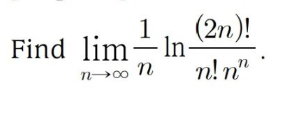
AlgebraQuestion and Answers: Page 255
Question Number 105625 Answers: 1 Comments: 0
Question Number 105605 Answers: 2 Comments: 0
Question Number 105536 Answers: 1 Comments: 0

Question Number 105534 Answers: 1 Comments: 2

Question Number 105456 Answers: 2 Comments: 0
Question Number 105448 Answers: 3 Comments: 2
Question Number 105414 Answers: 0 Comments: 2

Question Number 105413 Answers: 0 Comments: 0

Question Number 105406 Answers: 0 Comments: 0

Question Number 105340 Answers: 1 Comments: 0
Question Number 105322 Answers: 0 Comments: 1

Question Number 105320 Answers: 0 Comments: 0
Question Number 105234 Answers: 0 Comments: 0
Question Number 105222 Answers: 0 Comments: 0

Question Number 105189 Answers: 0 Comments: 2

Question Number 105158 Answers: 4 Comments: 0
Question Number 105124 Answers: 1 Comments: 0
Question Number 105120 Answers: 1 Comments: 0
Question Number 105083 Answers: 0 Comments: 0

Question Number 105082 Answers: 0 Comments: 0

Question Number 105023 Answers: 1 Comments: 0
Question Number 104973 Answers: 1 Comments: 1
Question Number 104859 Answers: 2 Comments: 0

Question Number 104832 Answers: 1 Comments: 0
Question Number 104782 Answers: 1 Comments: 0

Question Number 104758 Answers: 0 Comments: 0

Pg 250 Pg 251 Pg 252 Pg 253 Pg 254 Pg 255 Pg 256 Pg 257 Pg 258 Pg 259
